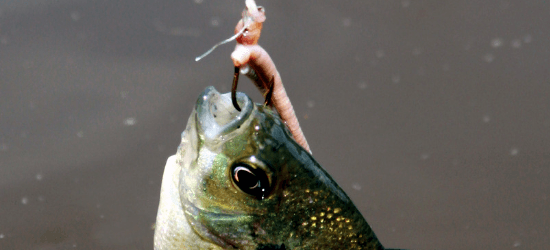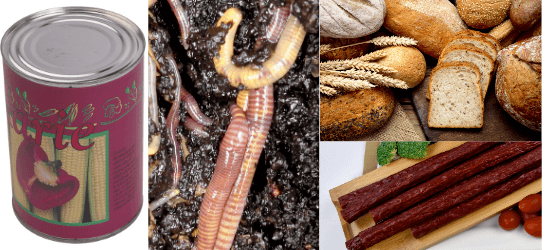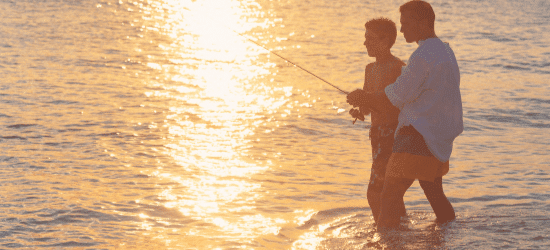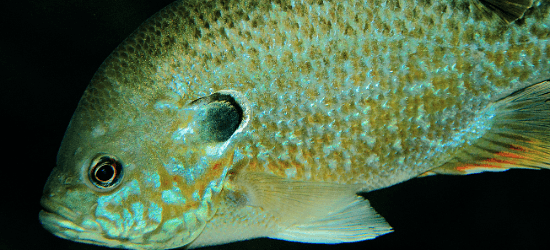If you want to catch your limit of delicious bluegills then you will want to keep reading. I have compiled a list of 10 bluegill fishing techniques that work wonders and you will catch your limit of these panfish day in and day out!
Bluegills are one of the most plentiful fish species we have in North America. They are stocked and naturally flourishing in most of our lakes rivers and streams. One of the great things about bluegill fishing is that they congregate close to the shore so there’s no need to get into a boat to fish these blue, gill covered beauties!
I remember as a kid catching bluegills in lakes close to my home. I would pack up my bike with a tackle box and fishing pole and catch a stringer full of panfish every day. Then I would go home and gut and scale them and have my mom fry them up! It makes a youngster feel accomplished by catching his/her own food for the day. Oh, the good old days!
So I decided to write up a list of 10 bluegill fishing techniques that will get you catching your limit. Let’s get right into it. Enjoy!
10 Bluegill Fishing Techniques

Tip 1 – Farm Ponds Hold The Biggest Bluegills
Believe it or not farm ponds usually hold the biggest bluegills around. This is because ponds that are located on farms are usually clean bodies of water and the fish can live for years unhindered by overfishing and other invasive species that sometimes get into our lakes and rivers from boaters.
So if you want to catch some of the biggest bluegills around you should check out the farms in your area and ask the owners if you can fish in their pond. Most farmers would be happy to let you do this and if not just say thank you and find another farm. Doesn’t hurt to ask, right?
Tip 2 – Best Baits For Bluegills
When choosing baits for bluegill fishing you want to think small size baits because bluegills mouths are so small.

Bluegills and most types of bream are receptive to all sorts of baits. The best bait I recommend is, of course, nightcrawlers. You will want to cut the nightcrawlers up in little pieces about 10 pieces per nightcrawler. Because if you put a whole nightcrawler on a hook the bluegills will just slip your bait off the hook so that you will have to continually bait your hook.
Another type of worm that works is wax worms because they are just the right size to fit in the mouth of bluegill. Waxworms are a little more expensive then nightcrawlers so you have to consider that when purchasing your worms.
Some other unconventional baits that work well are sweetcorn kernels, slim jim beef jerky, and bread. You will be amazed at what these slabs will feed on. Do some experimenting with these baits and see which ones work the best for your particular fishing situation.
Tip 3 – Present Flies when Bluegills are Nesting
When bluegills are spawning you will want to not disturb the nests. To keep from disturbing the fish in the nests you will want to get a fly rod and present flies to the shallow areas around the nest.
As long as the bluegills in the nest are not spooked you will be able to fish this technique all day and catch a motherload of bluegills. Wolly worms and Wolly buggers work the best for fly fishing for bluegill while they are spawning.
Check out my article about fly fishing bream for more information.
Tip 4 – Small Hooks and Light Test
Since bluegill slabs are small under 1 pound, “unless you are finding some monsters” you will want to use small size hooks. Using a number 6 hook is just about the perfect size hook to use for bluegill fishing. If you use too big of a hook the bluegills will just nibble your bait away and you will never set the hook because it’s too big to fit in their mouth.
You will want to consider the test of the line you are using as well. A two to four-pound test line is plenty for bluegill fishing.
Tip 5 – Best Time To Catch Bluegills

Like a lot of fish, early morning or late evening is the best time to catch bluegills. That’s because panfish feed this time of day. They will eat all day and night but the optimal time to catch bluegills is in the early morning or late evening.
So what you can do is catch half your limit in the early morning. Cook them up for breakfast and take a nap. Then get up in the evening and catch the other half of your limit and cook that up for supper! The next day does it all over again. The perfect life! Fish, eat, sleep, repeat!
During the spawn is another perfect time to catch bluegills. They are very receptive to all sorts of baits during this time. The usual spawning season for bluegills in North America is between the months of June through August. But female bluegills are known to spawn up to nine times a year between late spring to early fall.
Tip 6 – Deeper Water Holds Big Slabs
Fishing the deeper water you will find the bigger bluegills especially at the end of summer early fall. Find waters that are 7 to 17 feet deep and you will find those big bluegills just waiting for your bait.
Fish along the weed lines at various depths to find the depth that these fish are. Once you find the right depth just keep fishing there and you will be amazed at the number of big slabs you will catch. Using a fish finder can help you find the right depth the bluegills are at more easily.
The big bluegills during the end of summer are done protecting the nests and are out in the deeper water. You will still find smaller bream in the shallow waters because they hide there protected from predators. But the big bluegills go deep because they don’t need the protection.
Fighting monster bluegill is like fighting bass fun and rewarding at the same time. And bluegills are a lot less finicky than bass.
Tip 7 – Use Slip Bobbers
The type of bobber you use can be critical in how far bluegills will take the bait. The longer they have the bait in their mouth the better chance you will have at hooking them. I recommend using slip bobbers instead of the commonly used round bobbers.
Slip bobbers will go with the fish and bait without very much resistance. Unlike round bobbers that have a ton of resistance that the fish will feel and might not hang on as long. Slip bobbers will tip up a little when there is a nibble so that you will know to get ready.
Tip 8 – Lighter is Better
When I fish for bluegills or any panfish for that matter I usually don’t use sinkers or anything that’s going to weigh the bait down. Because the hook, line, and bait should be enough weight. The more weight you have at the end of your line the more resistance the fish is going to feel.
And the more resistance the fish feels it’s going to think something isn’t right and let go of your bait. This is the last thing you want. So keep it light as possible.
Tip 9 – Jig Fishing For Bluegills
Other than live baits artificial baits work well when fishing for bluegills. Small jigs work well and the smaller the better because of the smallmouths even big bluegills have. That’s one of the only downfalls of fishing for bluegills is trying to get a hook out of those tiny mouths especially when they swallow the hook.
Using tiny jigs that imitate bugs is the best kind of jig to use when fishing bluegills. Bream love small bugs and when they want a little snack they will typically go after these bugs. You will also want to pair the bug jig with a tiny piece of worm or attractor scent because bluegills will smell their bait before the strike. So sight and scent are important in how many bluegills you will catch in a day.
Tip 10 – 3 Types of Float Rigs to Use
There are three types of float rigs that work wonders for catching bluegills.
- Waggler Float
These floats come in two types bodied or straight and are only attached to the bottom of the fishing line. Some of the materials that make up waggler floats are balsa wood, plastic, reed, and cane.
- The Primal Slip float
The basic primal slip float includes a slip bobber, swivel, split shot, short leader, and a jig at the end. You can more accurately fish around objects like fallen sunken trees and fishing docks using a slip float type rig.
- Bubble Rig
With the bubble rig, you start with an artificial hair jig. Tie the jig to a four-pound fluorocarbon line. Tie that to one end of a swivel and then tie the other end of the swivel to four-pound test line and at the top, you have just a bubble bobber.
There are many types of floats and rigs but I have found that these three work the best for bluegill fishing. I encourage you to experiment with other rigs and floats. You never know what will personally work for you and the way you fish.
Conclusion

Put these bluegill fishing techniques to work, and you will be catching more bluegills than you will know what to do with. Here is a summary of the 10 techniques for catching bluegills.
Bluegills usually get the biggest in farm ponds so find a farm and ask the owner if you can fish his ponds.
Best baits to use:
- Nightcrawlers
- Sweetcorn kernels
- Wax Worms
- Slim Jim Beef Jerky
- Bread
Present artificial flies when bluegill is nesting so as you don’t disrupt the spawning process.
Use number 6 small hooks, light tackle, and Four-pound test fishing line
The best time to catch bluegills is in the early morning or late evening and during the summer months when they are spawning.
Deepwater holds the biggest bluegill slabs. The smaller fish will stick around the shallows while the bigger bluegills will generally stay in the deeper waters along weed lines.
Use slip bobbers for less resistance. The more resistance bluegill feels the less likely he will hang onto your bait.
The lighter your fishing tackle the better. This has to do with resistance like the use of slip bobbers. The less resistance a fish feels the longer it will stay at the end of your line giving you a better chance at hooking it.
Use tiny bug-looking jigs when jigging for bluegills. Bug jigs work well on bluegills that are being finicky.
3 types of floats that are great for catching bluegills:
- Waggler float
- Primal Slip Float
- Bubble Rig
When you start catching bluegills using these techniques, please come back here and let us know how it’s working for you. Thanks for reading.
If you have any questions or comments, please leave them in the comments section below. And as always Happy Fishing!





Thank you for this great article. I was wondering how to catch more bluegills, and the first thing I will try will be to ask a local Farm if I can fish their pond. That’s also very interesting that you can use bread and slim jims and even corn kernels to catch the fish. Thank you for helping me to catch my limit and teaching these great strategies. The picture of the two people fishing in the water is very nice. Have a great day.
You are welcome. If you can find a farm pond near you, then you will likely catch some monster slabs! Bluegills feed on a number of things. I even heard they will strike on gum if you can believe that. I might give that a try next time I’m out fishing for bream.
Thanks for reading I’m glad you got some useful tips from the article.
Hi Cory! One of the most convenient points concerning bluegills, in my book, is that they can be found close to the shore. I can’t get into my boat anymore, but that won’t stop me from catching some nice bluegills.
One of the tips that will make a massive difference for me is tip number 5. I wasn’t considering up to this point that panfish feed early morning or late evening.
Hi Henry. That is one of the things I love about fishing for bream is you can find them close to shore. No need for a boat just pack your tackle box and rod and go fishing.
Most fish feed in the early morning or late in the evening so if you are looking to catch a lot of fish those are the times to do it. I’m glad you got some useful info from this article and good luck fishing.
I have been a fisherman all my life, but just a few months ago, I started to have a great interest in bluegills. And man, I have so much to learn about them. I have discovered how much information there is online and have been enjoying researching. I’m glad I have found your site and have bookmarked it!
I have also arrived at the same conclusion you presented here, the best baits for bluegill are nightcrawlers, and they have to be cut into little pieces. I have tried a few things, and I know this is these are the best baits.
Hi Abel. Nothing beats the use of nightcrawlers to catch bluegills. I know a lot of anglers make the mistake of using a whole nightcrawler when fishing for bluegills. I know this because when I started out I would use the whole worm on my hook and the bluegills would take my worm constantly so I would have to keep rebaiting the hook. When you use a little piece of worm you will catch more bluegills because it’s easier to catch the bluegills when there is more hook than worm.